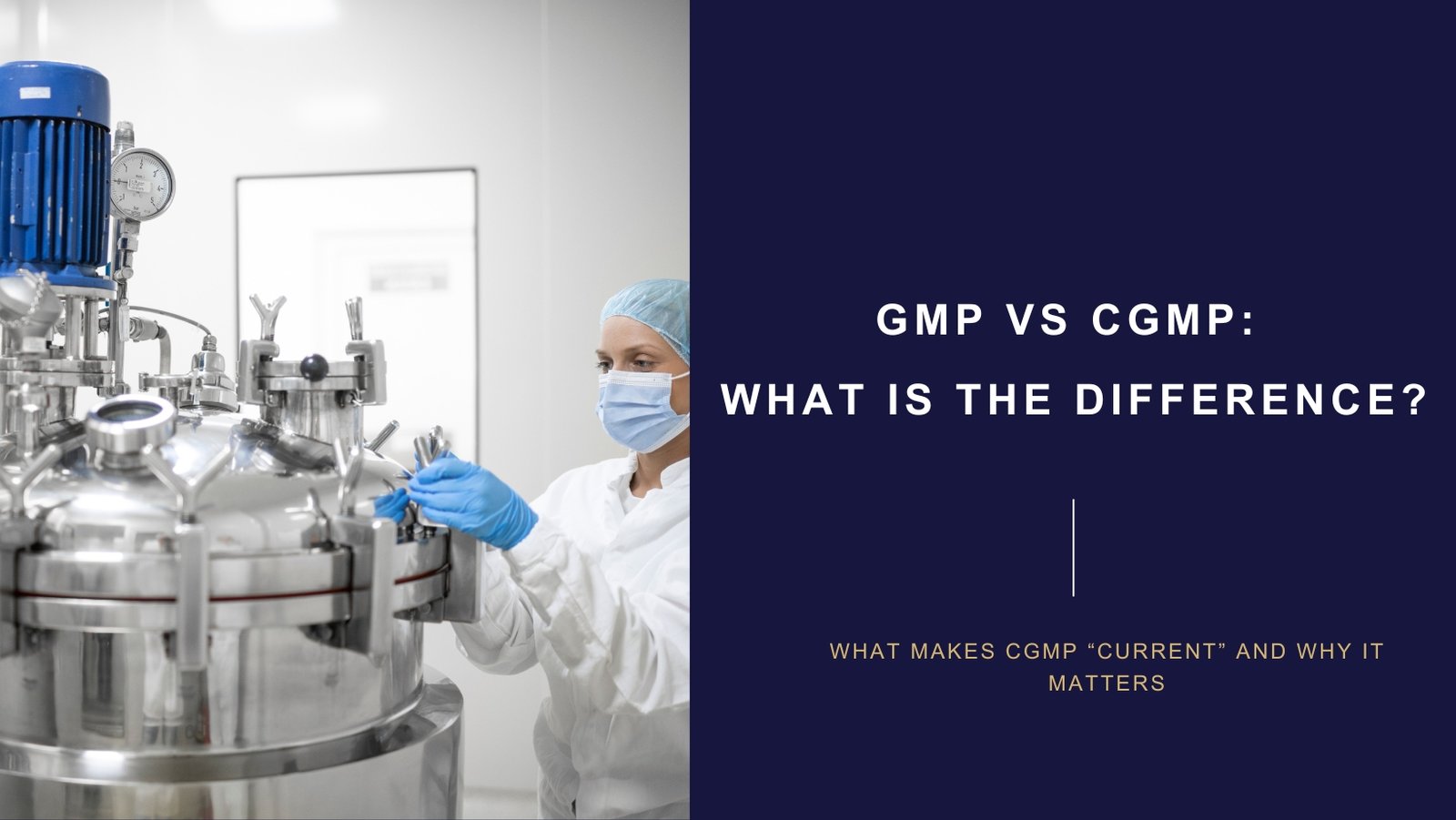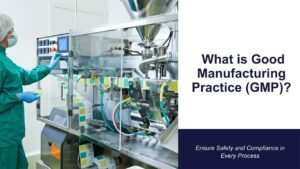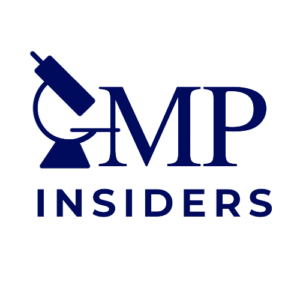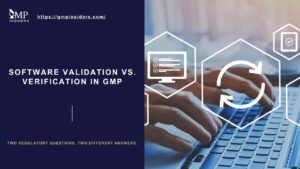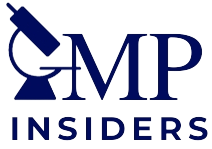GMP stands for Good Manufacturing Practice. It’s a standard that defines how products, particularly in the pharmaceutical sector, should be manufactured and controlled to meet quality standards. The “c” in cGMP stands for “current,” emphasizing that systems, equipment, and practices must be kept up to date.
While both terms share the same foundation, the difference lies in the expectations they imply. GMP sets the baseline; cGMP demands continuous improvement. Regulatory bodies like the FDA expect manufacturers to adopt technologies and processes that reflect the current state of science, even if the basic GMP framework hasn’t changed.
This article compares GMP and cGMP in practice, covering technology, documentation, quality systems, inspections, and the steps companies must take to remain compliant.
Foundational Components – GMP Principles
GMP is built around several essential elements that define how manufacturing operations should be structured and controlled. These principles are designed to reduce risks, maintain consistency, and ensure that products meet predefined quality standards.

Personnel
Qualified personnel are the foundation of any compliant manufacturing environment. Everyone involved must be trained not only in their specific duties but also in GMP expectations relevant to their role.
Key areas:
- Defined responsibilities
- Initial and ongoing GMP training
- Hygiene standards and gowning procedures
- Awareness of contamination and cross-contamination risks
Premises and Equipment
The design of manufacturing and testing areas must support product quality and prevent errors. This includes logical workflows, segregation of activities, and suitable environmental conditions.
Requirements include:
- Clean, well-maintained facilities
- Proper flow of materials and personnel
- Controlled temperature, humidity, and pressure where required
- Qualified and calibrated equipment with documented maintenance
Documentation
Every action that affects product quality must be documented. This includes procedures (SOPs), batch records, logs, and certificates.
Key points:
- Records must be legible, accurate, and completed in real-time
- Controlled document formats and versioning
- Deviations must be documented and investigated
- Electronic records must meet data integrity standards (e.g., ALCOA++)
SEE ALSO: Data Integrity and Data Governance in GMP
Processes and Procedures
Processes must be clearly defined, validated, and followed consistently. This ensures that variability is minimized and quality is maintained from batch to batch.
Elements include:
- Approved master batch records
- Validated manufacturing and cleaning procedures
- In-process controls (IPC)
- Change control systems for any planned modifications
Quality Control and Testing
Raw materials, intermediates, and finished products must be tested against approved specifications to ensure compliance. All analytical methods must be validated or verified.
SEE ALSO: Difference Between Validation and Verification of Analytical Methods
Requirements:
- Documented sampling plans
- Trend analysis for critical quality attributes
- Handling of out-of-specification (OOS), out-of-trend (OOT), or invalid results
- In cGMP systems: integration with LIMS and data review workflows
What Makes cGMP “Current”
The main difference between GMP and cGMP lies in expectations. While GMP outlines the foundational requirements for manufacturing quality, cGMP reflects the need to stay aligned with the latest scientific, technical, and regulatory developments.

This expectation is not optional; regulators assess whether companies are keeping their systems, processes, and practices up to date.
Technology and Automation
cGMP promotes the adoption of modern tools that enhance control, reduce human error, and improve data reliability. Companies are expected to move beyond manual systems when better options exist.
Examples include:
- Electronic Batch Records (EBR)
- Manufacturing Execution Systems (MES)
- Integrated temperature and humidity monitoring
- Automated weighing and dispensing systems
Risk-Based Approach
A shift from reactive to proactive quality is central to cGMP. Companies must identify potential risks in their operations and implement controls to mitigate them.
This involves:
- Quality Risk Management (QRM) practices (aligned with ICH Q9)
- Risk assessments for equipment, materials, and suppliers
- Control strategies based on criticality
Continuous Improvement
Under cGMP, quality is not a static goal; it is a dynamic one. Regulators expect evidence that processes, systems, and knowledge are continually reviewed and updated for improvement.
Examples of this mindset:
- Ongoing process verification (OPV / CPV)
- Periodic review of SOPs and quality data
- CAPA systems that include trend analysis and effectiveness checks
- Use of metrics to monitor system health and performance
GMP vs. cGMP: Side-by-Side Comparison
While the terms GMP and cGMP are often used interchangeably, the difference is more than just semantics. The inclusion of “current” in cGMP signals a higher standard, one that goes beyond minimum compliance and aligns with modern expectations. The table below outlines the key distinctions.
| Aspect | GMP (EU, WHO, PIC/S) | cGMP (FDA) |
|---|---|---|
| Term Used | "GMP" – Standard terminology used across EU, WHO, PIC/S. Expectations reflect modern practice. | "cGMP" – Used by FDA to highlight the need for systems to be up to date. |
| Regulatory Basis | EU GMP Guidelines, ICH Q8–Q10, Annexes (e.g., Annex 1, Annex 11), WHO TRS 986, PIC/S PE 009. | 21 CFR Parts 210, 211, 11. Supported by FDA guidance (e.g., Data Integrity 2018). |
| Approach to Risk | Risk-based approach required. QRM principles integrated into qualification, validation, deviations, change control. | FDA expects structured risk assessments across systems and processes. |
| Technology | Use of modern, fit-for-purpose systems is expected. Legacy systems must be justified and controlled. | Use of current technology is expected. Failure to modernize may trigger citations. |
| Data Integrity | ALCOA++ principles enforced. Systems must be validated, secure, and audit-ready. Annex 11 applies. | Same requirements under ALCOA++. Part 11 governs electronic systems. |
| Inspection Focus | Inspectors assess control strategy, data review, system lifecycle, and evidence of ongoing improvement. | Similar focus. FDA expects documented evidence of monitoring and review. |
Regulatory Framework and Authorities
Understanding how GMP and cGMP are enforced requires looking at the expectations of the central regulatory authorities. While the core principles are aligned, each body has its approach to implementation, terminology, and inspection focus.
FDA (United States)
The U.S. Food and Drug Administration (FDA) explicitly refers to cGMP, emphasizing the need for manufacturers to maintain up-to-date systems. The legal basis for enforcement lies in 21 CFR Parts 210 and 211 for finished pharmaceuticals, Part 212 for PET drugs, and Part 820 for medical devices.
FDA inspections place strong emphasis on:
- Data integrity and Part 11 compliance
- Evidence of continuous process verification
- Use of validated computerized systems
- Adequate CAPA and change management processes
Failure to meet current expectations can result in warning letters, import alerts, or product recalls, even if traditional GMP compliance is in place.
EMA (European Medicines Agency)
The EMA regulates GMP through the EU Guidelines for Good Manufacturing Practice, which are structured into Part I (medicinal products), Part II (APIs), and Annexes (covering specific areas, such as Annex 1 for sterile products).
While the EU does not officially use the term “cGMP,” its interpretation of GMP is modern and risk-based. Companies are expected to:
- Apply ICH Q8–Q10 principles
- Maintain a robust Pharmaceutical Quality System (PQS)
- Adopt quality risk management (QRM) in daily operations
- Use up-to-date technologies and control strategies
PIC/S (Pharmaceutical Inspection Co-operation Scheme)
PIC/S is a collaborative arrangement between regulatory authorities aimed at harmonizing GMP standards and inspection procedures worldwide. It currently includes over 50 participating authorities, including the FDA, EMA member states, Health Canada, TGA (Australia), Swissmedic, and others.
Key contributions of PIC/S:
- Provides a harmonized GMP guide (based on the EU GMP Guide)
- Conducts inspector training and peer assessments
- Facilitates mutual recognition of inspections among member countries
- Supports consistent GMP interpretation across jurisdictions
For manufacturers operating globally, aligning with PIC/S expectations often ensures smoother inspections and reduced duplication of audits. Although PIC/S doesn’t enforce regulations directly, its guidance influences national policies in member countries and serves as a benchmark for inspection readiness.
WHO (World Health Organization)
The WHO GMP guidelines are widely used in countries that lack national GMP regulations. They provide a standardized approach aimed at ensuring access to safe medicines globally, particularly in low- and middle-income countries.
WHO’s guidelines:
- Reflect current global best practices, often aligning with PIC/S and EU GMP
- Emphasize essential systems like sanitation, documentation, and validation
- Are used by agencies like the Global Fund and UNICEF for supplier qualification
WHO’s GMP is often the foundation for local adaptations and is key in supporting manufacturing for international procurement.
Evolution of GMP and cGMP
The development of GMP and the later emphasis on cGMP did not happen overnight. They reflect decades of regulatory learning, public health incidents, and industry advancements.

Early Origins: Why GMP Was Introduced
- 1906 – The U.S. Pure Food and Drug Act is passed in response to widespread consumer concerns about the quality of drugs and food adulteration.
- 1937 – The Elixir Sulfanilamide disaster kills over 100 people due to toxic ingredients. There were no requirements to test drug safety.
- 1938 – The U.S. Food, Drug, and Cosmetic Act becomes law, requiring safety testing of drugs before marketing.
- 1962 – The thalidomide tragedy in Europe leads to birth defects in thousands of children, prompting tighter regulation worldwide.
Result: These events laid the groundwork for formalized Good Manufacturing Practices (GMP), which require controls over facilities, equipment, training, and records.
GMP Becomes Global
- 1968 – EPIA Publishes First European GMP Guide: The European Pharmaceutical Inspection Association (EPIA) issued a voluntary GMP guideline, marking one of the earliest formalized GMP frameworks in Europe.
- 1978 (USA): The FDA codifies GMP into 21 CFR Parts 210 and 211, making compliance mandatory for all U.S. drug manufacturers.
The Shift Toward cGMP
In the 1990s and 2000s, regulators recognized that:
- Compliance alone was not enough to prevent quality failures.
- Technology was advancing faster than regulations.
- Static GMP systems allowed outdated practices to persist.
The FDA began using the term “cGMP” to encourage the industry to strive for continuous improvement. “Current” means systems and practices should not just meet the baseline but reflect the current state of science and technology.
ICH and Modernization
- ICH Q7, Q8, Q9, Q10, and Q12 (2000s–2010s) further evolved GMP thinking by:
- Encouraging Quality by Design (QbD)
- Embedding Risk Management (QRM)
- Defining Pharmaceutical Quality Systems (PQS)
- Promoting lifecycle approaches to development and manufacturing
Today’s Context
cGMP is now the expected norm, especially in FDA-regulated environments.
EU guidelines don’t formally use the term “cGMP.” Still, the expectations are equivalent, especially following the revision of Annex 1 and the increased focus on contamination control strategies, data integrity, and real-time monitoring.
Benefits and Challenges of cGMP Implementation
Shifting from baseline GMP compliance to a cGMP-aligned system offers more than just regulatory peace of mind; it changes how a company manages risk, quality, and operations. But with these benefits come real-world challenges that must be addressed early on to ensure successful adoption.
Benefits
Companies that proactively adopt cGMP principles often report improvements in efficiency, product reliability, and overall readiness for inspections. Here’s what this shift can offer:
- Enhanced Product Quality and Patient Safety: Modern controls, real-time monitoring, and validated processes reduce variability and improve consistency from batch to batch.
- Better Inspection Outcomes: With integrated systems and clear data traceability, cGMP-aligned companies are in a stronger position to demonstrate compliance, especially during unannounced inspections.
- Fewer Deviations and Recalls: When critical steps are automated and documentation is generated in real-time, the likelihood of human error or missed steps drops significantly.
- Stronger Supplier and Process Oversight: cGMP encourages lifecycle-based supplier qualification and oversight, improving material reliability and minimizing production delays.
- Competitive Positioning: A mature quality system can support global distribution, strategic partnerships, and smoother regulatory approvals, especially in highly regulated markets.
Challenges
Despite the long-term advantages, implementing cGMP is not without its obstacles. Organizations often encounter internal and external barriers when attempting to modernize their systems.
- High Initial Investment: Modernizing equipment, infrastructure, and IT systems can require significant capital and resource allocation, particularly for smaller firms.
- Organizational Resistance: Adopting a continuous improvement mindset demands changes at every level, from executive leadership to operators on the shop floor. Resistance to change can delay or derail efforts to achieve success.
- Technical Complexity: Introducing electronic systems such as MES, QMS, or LIMS involves validation, staff training, and ongoing support, often requiring specialized expertise.
- Heightened Regulatory Expectations: Operating under cGMP implies a higher level of scrutiny. Systems must not only function properly but also demonstrate compliance in real-time and under inspection pressure.
- Sustainability of Compliance: Maintaining a cGMP state requires continuous monitoring, document revisions, training updates, and data analysis. It’s an ongoing process, not a one-time project.
Emerging Trends and Future Outlook
As regulatory expectations evolve and technology continues to advance, cGMP is shifting from a focus on maintaining compliance to building resilient, data-driven quality systems. The pharmaceutical industry is already seeing a shift toward more innovative processes, deeper integration, and proactive quality management.
Digitization of Quality Systems
Many companies are transitioning from fragmented or paper-based documentation systems to fully integrated platforms that combine batch records, deviation tracking, and training management in a single location. This shift not only improves data integrity but also enables real-time visibility into operations.
- Electronic Quality Management Systems (eQMS)
- Manufacturing Execution Systems (MES)
- Laboratory Information Management Systems (LIMS)
- Integration with ERP and IoT platforms
Real-Time Monitoring and Release
One of the most impactful developments is the growing use of real-time monitoring for critical parameters. This enables faster decision-making, shorter batch release times, and enhanced control over product quality.
- In-line sensors and environmental monitoring
- Process Analytical Technology (PAT)
- Real-Time Release Testing (RTRT)
AI and Predictive Analytics
Artificial Intelligence is beginning to play a role in predictive maintenance, quality trending, and anomaly detection. While still emerging, these tools have the potential to identify issues before they lead to deviations or failures.
- Trend analysis for OOS/OOT results
- Predictive failure models for equipment and processes
- Automation in root cause analysis
Focus on Data Governance
As reliance on digital systems increases, so does the scrutiny of how data is collected, stored, and managed. Regulators are placing more emphasis on data governance frameworks that ensure integrity across the product lifecycle.
- Data mapping and classification
- Access control and audit trails
- Backup and disaster recovery protocols
Sustainability and Green GMP
A growing trend is the alignment of GMP practices with sustainability goals. This includes optimizing water and energy usage, reducing waste in cleaning and sterilization processes, and selecting less hazardous solvents in analytical testing.
How to Transition from a GMP to a cGMP Mindset
Moving from GMP compliance to a cGMP-aligned approach isn’t just about upgrading systems; it’s about shifting how an organization thinks about quality. This transition involves both technical improvements and cultural change. For many companies, the real challenge lies not in the regulations themselves but in adopting a proactive, current, and risk-aware mindset.
1. Start with a Gap Assessment
Begin by identifying where your current systems stand in relation to modern cGMP expectations. This includes reviewing documentation practices, equipment qualification, data handling, and supplier oversight.
- Review existing SOPs, batch records, training programs, and logs
- Map your current data flow (paper vs. digital, manual vs. automated)
- Identify areas with outdated technologies or inconsistent controls
2. Upgrade Systems Strategically
Not every system has to go digital overnight. Start by prioritizing areas that are prone to human error or data loss. Electronic batch records, validated spreadsheets, and automated monitoring systems often provide the quickest value.
- Focus first on high-risk areas (e.g., documentation errors, manual calculations)
- Implement and validate electronic systems incrementally
- Ensure compatibility with data integrity standards (e.g., Part 11, Annex 11)
3. Train for Competence, Not Just Awareness
It’s not enough for staff to know what GMP is, they must understand why procedures exist and how their actions impact product quality. Training must be role-specific and effectiveness-based.
- Link training to real processes and deviations
- Incorporate data integrity, QRM, and audit readiness
- Document all training activities and assess understanding regularly
4. Strengthen Quality Culture and Accountability
cGMP requires cross-functional ownership of quality. Management must lead by example and empower teams to speak up, document issues, and continuously improve.
- Include quality KPIs in performance reviews
- Encourage open reporting of deviations and near misses
- Promote ongoing SOP and system improvement
5. Conduct Internal Audits with a Modern Lens
Internal audits should go beyond checking whether SOPs are followed; they should evaluate whether systems are still appropriate, current, and robust.
- Include trending, change control, data review, and validation in the audit scope
- Identify gaps between intended procedures and actual practice
- Use audit findings as input for continuous improvement
FAQ
Do EU Regulators Recognize the Term “cGMP”?
The European Medicines Agency (EMA) and EU GMP guidelines do not formally use the term “cGMP”. Instead, they refer to GMP throughout their guidance. However, the principles of continuous improvement, risk management, and modern system expectations are embedded within EU GMP, particularly in Annex 1 and ICH Q10.
Although the terminology differs, the practical expectations are nearly identical to those underlying the cGMP concept used by the FDA.
Does cGMP Require Cloud-Based Systems?
No, cGMP does not mandate cloud-based solutions. However, if cloud systems are used, they must meet all relevant data integrity and validation requirements, including security, audit trails, and access control.
On-premises systems are still acceptable if properly managed and validated. The focus is not on where the data is stored but whether it is secure, reliable, and retrievable. Companies must assess the risks and ensure vendor qualification for cloud providers.
Do Regulators Expect AI or Machine Learning Under cGMP?
No, but the use of advanced analytics and AI is growing. Regulators don’t require artificial intelligence, but they expect companies to understand and validate any tool used in decision-making or data processing.
If AI is used for trending, predictive maintenance, or quality monitoring, it must be qualified like any other system. Transparency, traceability, and human oversight remain essential. Using these tools does not exempt companies from maintaining compliance with core principles of data integrity.
What Are Examples of Failing to Meet cGMP Expectations?
Common examples include using outdated equipment, relying on paper records with repeated errors, failing to investigate recurring deviations, or not trending critical process parameters. Another sign is not updating SOPs for years or ignoring warning signals from audits and quality metrics.
These practices may not violate the letter of the GMP law, but they show a lack of active quality oversight. Under cGMP, regulators look for systems that are not only compliant but also evolving and improving.
Conclusion
GMP and cGMP share the same regulatory foundation, but the way they are applied sets them apart. cGMP is not a different set of rules; it’s an expectation that those rules are applied using current tools, systems, and scientific understanding.
Companies that adopt a cGMP mindset treat compliance as part of a living system, not a static checklist. They invest in traceability, digital infrastructure, and risk-based decision-making—not because regulations demand it but because it makes their operations more reliable and resilient.
The shift to cGMP isn’t about doing more; it’s about doing things better with purpose and accountability. In today’s regulatory landscape, staying current isn’t just recommended. It’s expected.

